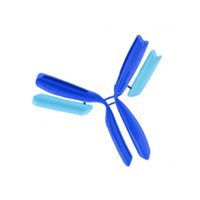An extensive targeted proteomic analysis of disease-related protein biomarkers in urine from healthy donors.
Nolen, BM; Orlichenko, LS; Marrangoni, A; Velikokhatnaya, L; Prosser, D; Grizzle, WE; Ho, K; Jenkins, FJ; Bovbjerg, DH; Lokshin, AE
PloS one
8
e63368
2013
Show Abstract
The analysis of protein biomarkers in urine is expected to lead to advances in a variety of clinical settings. Several characteristics of urine including a low-protein matrix, ease of testing and a demonstrated proteomic stability offer distinct advantages over current widely used biofluids, serum and plasma. Improvements in our understanding of the urine proteome and in methods used in its evaluation will facilitate the clinical development of urinary protein biomarkers. Multiplexed bead-based immunoassays were utilized to evaluate 211 proteins in urines from 103 healthy donors. An additional 25 healthy donors provided serial urine samples over the course of two days in order to assess temporal variation in selected biomarkers. Nearly one-third of the evaluated biomarkers were detected in urine at levels greater than 1 ng/ml, representing a diverse panel of proteins with respect to structure, function and biological role. The presence of several biomarkers in urine was confirmed by western blot. Several methods of data normalization were employed to assess impact on biomarker variability. A complex pattern of correlations with urine creatinine, albumin and beta-2-microglobulin was observed indicating the presence of highly specific mechanisms of renal filtration. Further investigation of the urinary protein biomarkers identified in this preliminary study along with a consideration of the underlying proteomic trends suggested by these findings should lead to an improved capability to identify candidate biomarkers for clinical development. | 23723977
 |
Intravenous renal cell transplantation for rats with acute and chronic renal failure.
Kelly, KJ; Zhang, J; Wang, M; Zhang, S; Dominguez, JH
American journal of physiology. Renal physiology
303
F357-65
2012
Show Abstract
Acute kidney injury (AKI) and chronic renal failure (CKD) are the most challenging problems in nephrology. Multiple therapies have been attempted but these interventions have minimal effects on the eventual outcomes, and all too often the result is end-stage renal disease (ESRD). The only effective therapy for ESRD is renal transplantation but only a small fraction of patients receive transplants. In this work we introduce a novel approach to transplantation designed to regenerate kidneys afflicted by severe AKI or CKD: intravenous renal cell transplantation (IRCT) with adult rat primary renal cells reprogrammed to express the SAA gene localized and engrafted in kidneys of rat recipients that had severe AKI or CKD. IRCT significantly resolved renal dysfunction and limited kidney damage, inflammation, and fibrosis. Severe CKD was successfully improved by IRCT using kidney cells from donor rats or by renal cell self-donation in a form of autotransplantation. We propose that IRCT with adult primary renal cells reprogrammed to express the SAA gene can be used to effectively treat AKI and CKD. | 22592640
 |
Obstructive protein cast nephropathy in cynomolgus monkeys treated with small organic molecules.
Guzman, RE; Datta, K; Khan, NK
Veterinary pathology
45
945-8
2008
Show Abstract
We have observed a renal toxicity consistent with an obstructive protein cast nephropathy in cynomolgus macaques but not in other species treated with different therapeutic candidates having a common carboxylic acid moiety, suggesting a species-specific sensitivity. Here, we present renal toxicity findings consistent with a protein cast nephropathy in a 2-week safety study in cynomolgus monkeys. Light microscopic changes consisted of intratubular cast formation, tubular dilatation, interstitial inflammation, and expansion of the medullary interstitium. Tubular cast material was identified as Tamm-Horsfall protein (THP) and, on ultrastructure, crystalloid material was present in vacuoles of tubular epithelium. It is hypothesized that microcrystal formation in the urinary tubular spaces induces aggregation of THP protein and cast formation in monkeys. Drug-induced obstructive nephropathy is not identified as a major problem in humans; thus, the clinical relevance of the above findings in monkeys is not clear. | 18984802
 |










